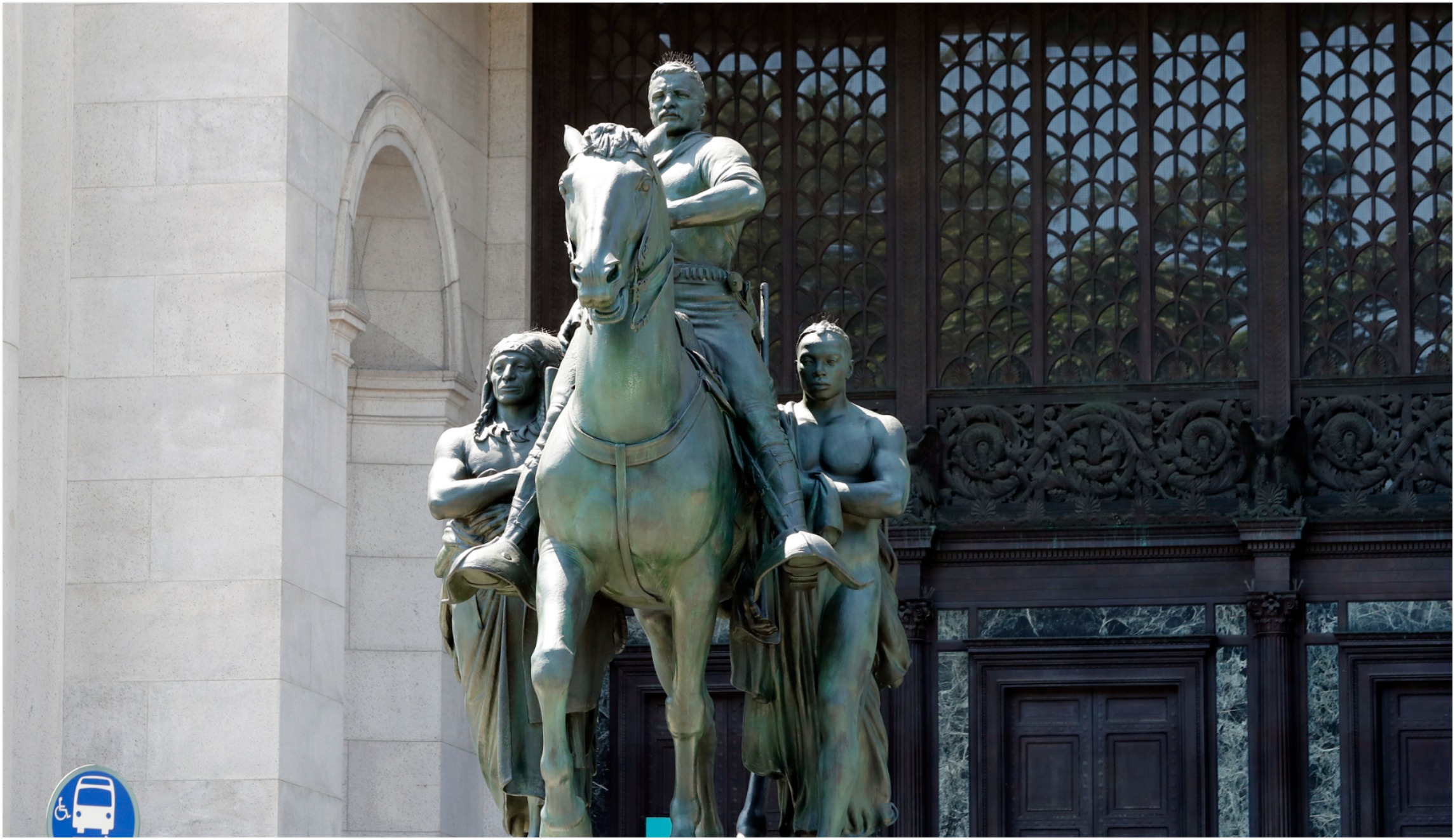The decision to remove a statue of Theodore Roosevelt that has stood outside the entrance to the American Museum of Natural History for over 80 years is an inflection point in the battle over public monuments.
To be sure, there are certain nuances to the statue’s removal that distinguish it from other, more ridiculous recent cases. Importantly, the decision to remove the statue was not done by an angry mob, such as the outrageous toppling of statues of George Washington and Ulysses S. Grant. Instead, it was proposed by the museum and accepted by the New York City government, which owns the building. One of those supporting the statue’s removal was Theodore Roosevelt IV, a great-grandson of the president, who serves as a trustee of the museum.
What’s especially complicated here is that the objection isn’t to Roosevelt himself. The statue, which has been controversial for decades, features Roosevelt mounted on a horse with an American Indian on one side and an African tribesman on the other. Roosevelt is not being canceled — in fact, when the statue is removed, the museum will rename a wing after him.

All of this having been said, we believe that it is a mistake to remove the statue.
Roosevelt’s prominent place in front of the museum is no accident. His father founded the museum, and he spent his life as a passionate naturalist and writer about natural history. As president, he led conservation efforts.
Opponents of the particular statue have complained that having Roosevelt towering over the African and American Indian figures is evocative of the subjugation of other races. They also point to his own jarring statements about American Indians and race.
However, like many figures in history, Roosevelt is complicated. For instance, he took a lot of heat when he invited friend Booker T. Washington to dine with him in the White House — the first time such a thing had ever happened.
“African-Americans were invited to meet in offices,” explained Deborah Davis, author of a book on the famous dinner. “They built the White House. They worked for the various presidents. But they were never, ever invited to sit down at the president’s table. And when that happened, the outrage was just unbelievable.”
Like its subject, the history of the statue itself, which is stunning as a sheer work of art, was also complex. In a video produced by the museum about the statue controversy, Harriet F. Senie, director of art museum studies at the City College of New York, explained that sculptor James Earle Fraser did not intend for the statue to portray subjugation of supposedly inferior races.
“The entire group, not just Roosevelt, was intended to be heroic,” Senie said. “The allegorical figures — and these are Fraser’s words — may stand for ‘Roosevelt’s friendliness to all races.’ The figures represent the continents on which he hunted, as either gun-bearers or guides or both.”
Even if one were to argue that the effect of the statue is different today than when it was first commissioned in 1925 and unveiled in 1940, that’s how history works. We study the past, and we try to understand both the heroic aspects and grapple with the rougher edges and earn insight into how attitudes have changed over time. There is even a “woke” argument against removing the statue because doing so erases and sanitizes uncomfortable parts of our past rather than forcing us to confront them.
It’s one thing to discuss the removal of Confederate statues that were intended to honor those who betrayed the United States to preserve and expand slavery. But taking down Roosevelt as the city also debates removing a Thomas Jefferson statue means that there is no conceivable endpoint in the campaign to erase the past.

